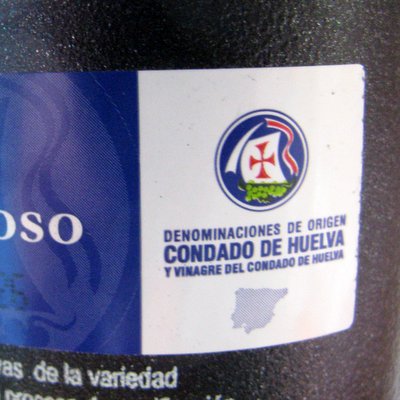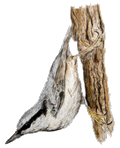
- Sherry Wine:
- Production
- Classification
- Cities & Bodegas
- Tastings
- Analogues
- Authors & Contacts
- Ðóññêèé ñàéò
Sherry analogues
Huelva wines
Olga Nikandrova and Denis Shumakov.
There is no straight pass,
as there are wetlands and lynxes on the way
Four out of eight Andalusian provinces have D.O.s for producing sherry-type wines. In Cadiz, it is sherry proper, in Cordoba — Montilla-Moriles wines, in Málaga — malaga. The fourth Andalusian province having its own D.O. which regulates the production of its own fortified wine similar to sherry, is Huelva.
Huelva is the name of the province as well as the name of the central city of this province. Huelva is situated to the north-west from the Jerez Region, on the border with Portugal. There is D.O. Condado de Huelva, which regulates the production of traditional wines, vinegars, and wines flavored with bitter orange. All matters relating to the production and distribution of these products are administered by the respective Regulatory Board.
We leave vinegar and orange wine (Vino Naranja) out of consideration (despite the fact that Vino Naranja is fortified and undergoes dynamic ageing, approximately as it is in Chiclana-de-la-Frontera), but concentrate on traditional wines. Only excluding mistelle, white and red dry wines and focusing our attention on fortified wines. Huelva produces two types of such wines: dry fortified wines (Vinos generosos) and sweet fortified wines (Vinos generosos de licor).
The situation with dry fortified wines is quite simple. They are produced from the following grape varieties: Zalema, Palomino Fino, Listán de Huelva and Garrido Fino (different grape varieties may be blended); they are aged dynamically; and they can be of two types. Condado Pálido (“pale”) wines are aged dynamically for minimum three years, have final alcohol content 15-17°, are analogous to Fino type of sherry and are mostly called fino. Condado Viejo (“old”) wines are oxidatively aged for at least three years, their final alcohol content is 15–22°, are similar to Oloroso type of sherry and are mostly called the same way.
The situation with sweet fortified (or liqueur fortified) wines is not so clear. Official documents qualify them as wines with 15–22% abv of the following types: Pale Dry, Pale Cream, Medium, Cream, Pedro Ximénez, Dulce and Moscatel, meaning by this terms the same as is meant in the Jerez Region. The ambiguity here is the following: in Huelva, the category of Vinos generosos de licor includes both blended wine (Pale Dry, Pale Cream, Medium, Cream) and natural sweet wines (Pedro Ximénez, Dulce, Moscatel). In fact, it’s alright, since all these wines are both liqueur (here sweet) and fortified. But the documents of the Regulatory Council also include another category of Huelva wines — Vinos de licor dulces, sweet liqueur wines. It is said that they are wines with 15–22% abv and a sugar content no more than 45 g per liter, including mistelle. So, based on the available data, we can guess that the two categories Vinos generosos de licor and Vinos de licor dulces must somewhat overlap.

D.O. Condado de Huelva mark on a bottle of wine
As soon as we have clarity in this issue, we’ll present it (this clarity) here. In the meantime we are slightly puzzled by the classification. And it seems that not only we are — some Huelva producers, in informal documents use the Jerez Region’s approach to classify their productsá setting apart blended (Pale Dry, Pale Cream, Medium, Cream) and natural sweet (Pedro Ximénez, Dulce, Moscatel) wines. But at the same time, they use the terminology of their Regulatory Council (Consejo Regulador) in official labeling (see the picture).
As for the wines themselves, then everything is quite clear here again. Pedro Ximénez, Dulce, Moscatel, as well; as in the Jerez Region, are produced from raisined grapes adding alcohol into a hardly fermenting must and putting it then for ageing and maturing, sometimes for a rather long time. Pale Dry, Pale Cream, Medium and Cream are blends of dry fortified wines, sweet wines and special additives. Since dry fortified wines are made from different grape varieties, the final grape composition of the blend can be rather rich.
It isn’t an easy task to find sherry-type wines from Huelva outside Huelva, so the hunt for them can be considered an adventurous, exciting and fit for a true sherry searcher occupation.
Here is the humble result of our hunt (in Russian):
— S' PX Solera 1989
Warning!
This site can contain information about drinks excessive consumption of which may cause harm to health and is unadvisable for people who didn’t come of age.
Share Sherry
- Sherry.wine, FEDEJEREZ
- Copa Jerez, Sherry Week
- Sherry Notes, Jerez de Cine
- Los Generosos, Criadera
- Jerez-Xeres-Sherry
- Los Vinos de Jerez
Articles
- There are more articles in Russian than in English in this website. Sorry :(
Reviews
- To our great regret, we didn’t have time to translate tasting and traveling notes into English. But, if you want, you can see them in Russian.

